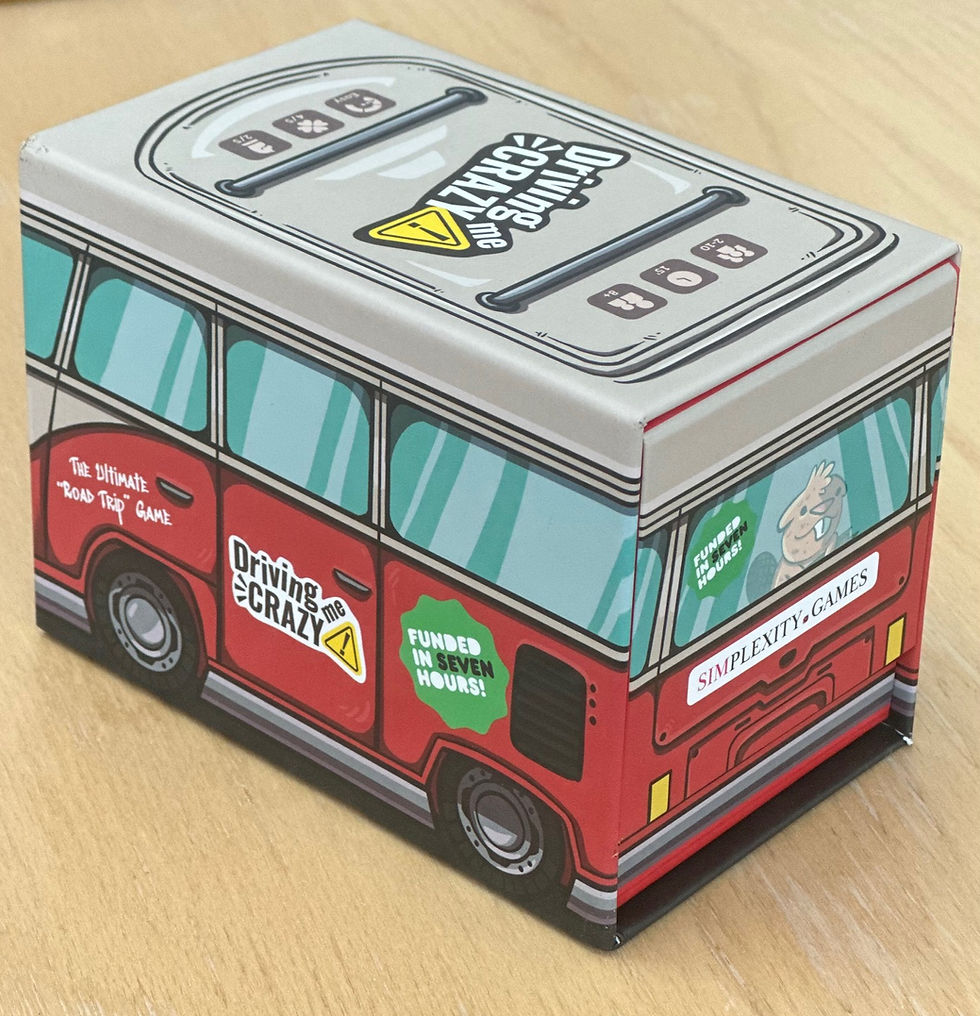Azul: Queen's Gardens
- Board's Eye View

- Apr 11, 2022
- 4 min read
Azul was the big hit abstract game of 2017. In the years since, publishers Next Move have built on its popularity and success by publishing a succession of standalone sequels. Azul: Stained Glass of Sintra was published in 2018 and Azul: Summer Pavilion followed in 2019. In the past couple of years there have been expansions that offer component upgrades and additional boards but Azul: Queen's Gardens is the most recent new standalone game in the Azul range. It was exhibited at Spiel (Essen) last October but it's only now appearing on retailers' shelves.

The premise in this iteration of Azul is that players are developing palace gardens. There are aspects of play that feel similar t0 previous Azul games in that players are drafting chunky plastic tiles from a display - this time hexes rather than squares or diamonds. The game is played over four scoring rounds, and a central dial on the scoreboard shows which three colours and symbols will score in that round. For each round a pile is made of face-down garden mats. Each turn a new mat is placed out and four tiles are drawn from a bag and placed on the mat. From across all the mats that are out, players take all tiles either of the same colour or with the same symbol provided they have spaces left where they can place the tiles on their storage mat. The exception is that a player cannot take two identical tiles (ie: where both the symbol and colour are the same). When a mat in the display is emptied of tiles, it is flipped and that will reveal the colour and symbol that is taken by one of the six spaces on that mat. For the purposes of selection, it is treated exactly the same as its tile icon.
All tiles and mats drafted by a player are placed on their individual storage board. This starts off with three 'joker' tiles, more of which are earned when tiles that are transferred to the player's garden surround a garden furniture icon. You'll need to place out mat tiles into your garden in order to be able to place out tiles (your starting board otherwise has spaces for only six tiles). On your turn, you can choose to place a tile or mat from your storage onto your player board instead of drafting from the display.
However, whatever you place out has to be paid for according to the symbols on the tile. Tiles with the single tree icon pay for themselves, but to place out a bird tile ('value' 2) will require another tile to be discarded and a value 6 flower tile will demand five discards! As with the drafting, the discarded tile(s) must either match the symbol or colour of the tile you are placing, tho' you can of course use Joker tiles. You'll hope to reap the benefit of the 'expensive' tiles in the end-game scoring which so dwarfs the round scoring that some strategic players will all but ignore opportunities for round scoring in favour of setting up stronger end-game scores.
In the end-game scoring, you'll count up in turn all matching connections of colours and symbols, scoring according to the value of the symbols. So, for example, three yellow tiles connected and showing a tree (1 point), butterflies (3 points) and a four-petal flower (4 points) will score 8 points. If you connect all six different tiles of the same colour, you score a six-point bonus in addition to the 1+2+3+4+5+6 for the tiles in the set, making a total of 27 points. Likewise, there's a six-point bonus for having a run of the same symbol in the six different colours; so if you manage to acquire and fund the connected placement of all six colours of the six flower tile, it'll score you a massive 42 points.
You'll want to use your storage board to plan ahead because the skilled player will want to optimise their placements to get multiple use out of as many tiles as possible: a tile can score for its place in a run of connected matching colours but it will score a second time if it is also part of a connected group of matching symbols. You'll need to be careful tho' to avoid being caught at the end of the game with any tiles or mats left on your storage board as these will rack up negative points. The exception is that you score a positive point for any unspent joker tiles you have left.
With Queen's Garden, designer Michael Kiesling and illustrator Chris Quilliams have managed to sustain much of the charm of Azul and recognisable similarities of the core mechanics but the additional steps between drafting and placement of tiles make this game a little more complex than its predecessors. That said, there's not a huge rules overhead, so even non-gamers will be comfortable playing once they are a turn or two in. The thin mats didn't cause any difficulty but, in some of our plays, we struggled to distinguish some of the tile colours. The two shades of green were reasonably easy to distinguish but you may well find players confusing the two shades of purple, particularly in some lighting conditions. Surely it would've been possible for Next Move to have found six more clearly distinct colours?
That gripe aside, Queen's Garden is a great addition to the Azul range of abstract strategy games.




